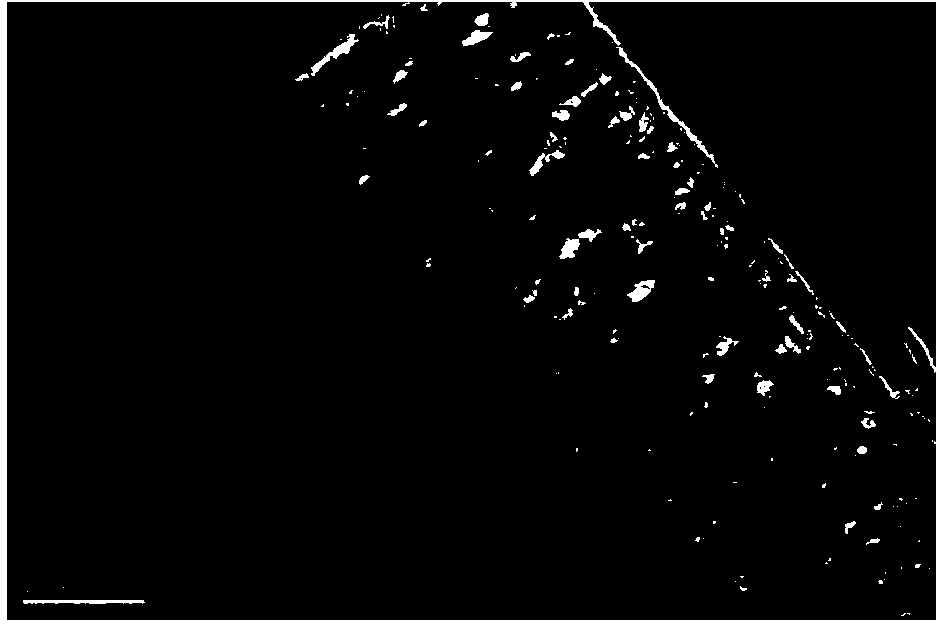Preparation method for multi-hole carbon nitride photocatalytic material doped with sulphur
A catalytic material, sulfur-doped technology, applied in chemical instruments and methods, physical/chemical process catalysts, hydrogen production, etc., can solve the problems of low photocatalytic activity, harsh synthesis conditions, cumbersome synthesis steps, etc., and achieve repeatability Good, short time-consuming, simplified reaction system effect
- Summary
- Abstract
- Description
- Claims
- Application Information
AI Technical Summary
Problems solved by technology
Method used
Image
Examples
Embodiment 1
[0026] Add 0.5mmol melamine and 0.5mmol cyanuric acid to 60mL deionized water, stir and disperse for 15min, then pour into a polytetrafluoroethylene reaction bottle, put the polytetrafluoroethylene reaction bottle into a constant temperature drying oven, heat at 100°C for 3h , and then cooled naturally to room temperature. The resulting suspension was filtered with a medium-speed filter paper with a pore size of 40 microns, washed three times with deionized water, and dried in a constant temperature drying oven at 60°C for 5 hours to obtain a yellow supramolecular polymer. The above solid was placed in a nitrogen atmosphere and calcined at 550° C. for 2 h (the heating rate was 15° C. / min) to obtain a solid powder of sulfur-doped porous carbon nitride photocatalytic material.
[0027] Some structural studies were carried out on the materials prepared by the above method. figure 1 Shown is the SEM picture of the supramolecular polymer precursor. It shows that the obtained supr...
Embodiment 2
[0029] Same as Example 1, except that the volume of deionized water was changed to 100 mL. The obtained sulfur-doped porous carbon nitride photocatalytic material has a specific surface area of 29 m 2 / g, the hydrogen production rate is 4.75mmol / (g*h), which is 7.6 and 4.75 times that of the products obtained by calcining melamine or thiocyanic acid under the same conditions, respectively.
Embodiment 3
[0031] Same as Example 1, except that the amount of thiocyanuric acid was changed to 0.4 mmol. The obtained sulfur-doped porous carbon nitride photocatalytic material has a specific surface area of 25 m 2 / g, the hydrogen production rate is 4mmol / (g*h), which is 6.4 and 4 times that of the products obtained by calcining melamine or thiocyanic acid under the same conditions, respectively.
PUM
| Property | Measurement | Unit |
|---|---|---|
| Specific surface area | aaaaa | aaaaa |
Abstract
Description
Claims
Application Information
 Login to View More
Login to View More - R&D
- Intellectual Property
- Life Sciences
- Materials
- Tech Scout
- Unparalleled Data Quality
- Higher Quality Content
- 60% Fewer Hallucinations
Browse by: Latest US Patents, China's latest patents, Technical Efficacy Thesaurus, Application Domain, Technology Topic, Popular Technical Reports.
© 2025 PatSnap. All rights reserved.Legal|Privacy policy|Modern Slavery Act Transparency Statement|Sitemap|About US| Contact US: help@patsnap.com



